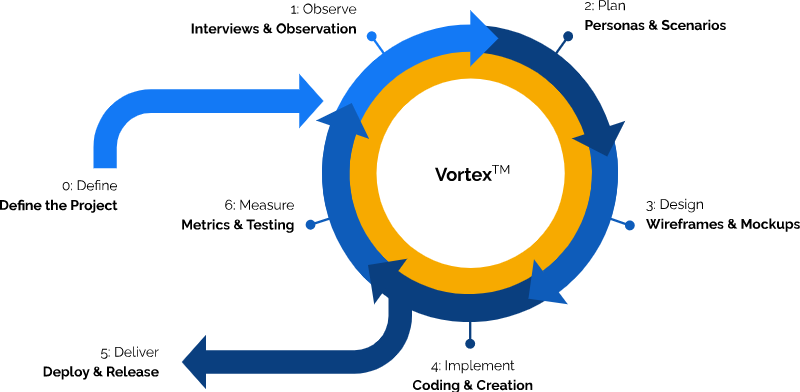In order to produce accessible, user-friendly applications that meet the needs of the end users, Andromeda has created Vortex™ a Lean, UX-Driven process for each software development project.
We assign a Team Lead to each project, to drive the technical decisions and facilitate communication between the team and the client. We use Atlassian products such as Jira, Confluence, and Bitbucket to manage the project assets and decisions, and to track work in progress.
Clear, consistent communication is critical for the success of all projects, so regular meetings and channels of communication are established at the start of each project.

As indicated in the above diagram, our process is iterative. Based on the size of the project and the distinct users and stakeholders involved, there may be multiple steps in progress at any one time, relative to different aspects or components of the project. Even though the steps above are distinct from each other for the purpose of communication, the reality is often more of a continuum of activity as we repeatedly cycle through the different phases.

